For the devout Hindu family residing in Malaysia, the journey to Gaya to perform ancestral rites is the ultimate expression of filial piety and a cornerstone of our Sanatana Dharma. This sacred journey, or yatra, ensures the peaceful transition and final liberation (moksha) of the souls of our ancestors (Pitṛs). This comprehensive guide is designed to provide a deep understanding of the rituals and a complete logistical plan for organizing a Gaya pilgrimage from Malaysia, covering everything from the profound spiritual significance to the practicalities of travel, accommodation, and food.
The Unrivalled Sanctity of Gaya: The Supreme Tirtha for Ancestral Salvation
The ancient Puranas, our sacred chronicles of divine history, unanimously and emphatically declare Gaya as the most excellent and powerful of all holy places (tirthas) for the performance of ancestral rites. Its significance is so profound that the scriptures place it on par with the highest paths to salvation. It is taught that the knowledge of the Supreme Brahman, residing in the holy land of Kurukṣetra, meeting one’s end in a cowshed, and performing the ancestral rite at Gaya are the four surest avenues to attaining liberation.
The Divine Sanction That Consecrates the Land of Gaya
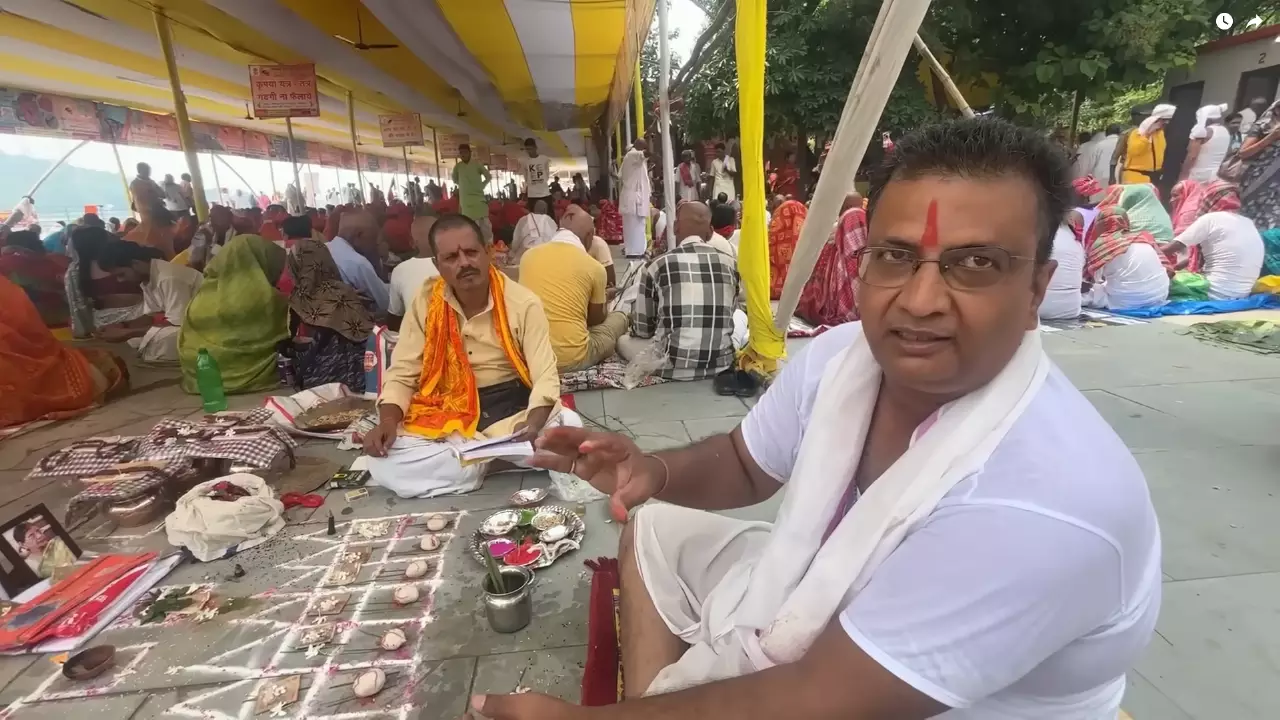
The unparalleled spiritual potency of Gaya is not a matter of mere belief, but is rooted in divine events that have sanctified every inch of its soil. The very ground, known as Gayā-kṣetra, is considered a tirtha in its entirety.
-
The Abode of Lord Vishnu as Gadādhara: The presiding deity of Gaya is none other than Lord Vishnu himself, in his formidable mace-bearing form, Gadādhara. The Puranas teach that He is eternally present here in the very form of the Pitṛs. Therefore, any offering made in Gaya is a direct offering to Lord Vishnu and the entire ancestral line. A pilgrimage to Gaya involves paying obeisance to a divine assembly, including Śiva (Maheśvara), Brahmā, and Vishnu, but it is the darshan of Lord Gadādhara that is central to the fulfillment of the rites. Worshipping Him here elevates hundreds of one’s family members to higher spiritual realms.
-
The Supreme Sacrifice of Gayasura: The sanctity of Gaya is inextricably linked to the great and pious demon, Gayasura. After he performed immense and unwavering penance, the celestials grew fearful of his power. They approached Lord Vishnu, who, acknowledging Gayasura’s supreme devotion, asked him to offer his body as a holy altar for a grand sacrifice. To keep his body still for the yajna, Lord Vishnu placed a great Dharmāśila (Stone of Virtue) upon Gayasura’s head. As a reward for his unparalleled sacrifice and devotion, Lord Vishnu granted him a divine boon: that the land covering his body would forever be known as Gaya and would be the most sacred place on earth for performing ancestral rites. This divine promise ensures that any Shradh performed here will always bear fruit and its merits will be imperishable, a crucial assurance for those undertaking a Gaya pilgrimage from Malaysia.
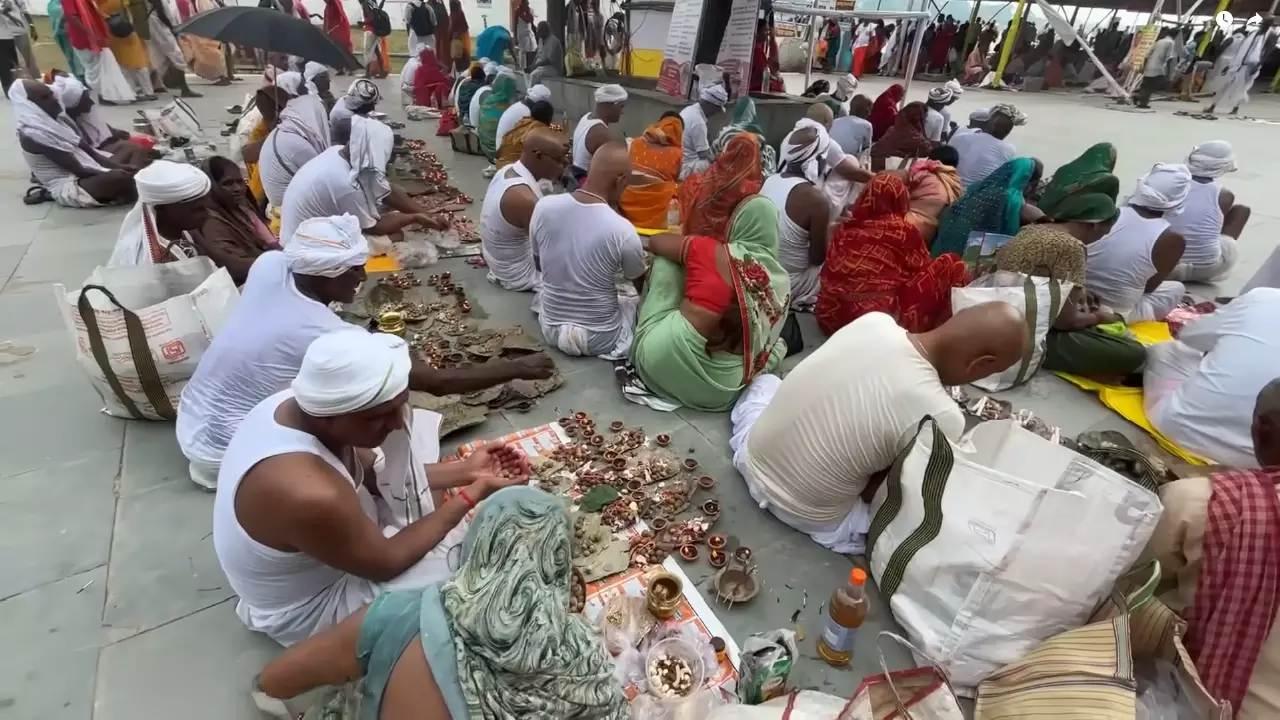
The Transformative and Imperishable Power of Performing Shradh in Gaya
For any family, undertaking a Gaya pilgrimage from Malaysia is not just a ritual; it is a powerful, transformative act of salvation that echoes through generations. The spiritual rewards, as detailed in the scriptures, are vast and eternal.
-
Guaranteed Liberation from All Realms: The Puranas state that ancestors, who may be suffering in hell (naraka) or wandering as restless spirits (pretas), yearn for a descendant to visit Gaya and act as their savior. A correctly performed Shradh in Gaya elevates them directly to Brahmaloka (the highest heavenly realm of the Creator), freeing them from the cycle of rebirth. It is the most powerful means to liberate an ancestor from the state of ghosthood.
-
Atonement for the Gravest Sins: The rites performed in Gaya are so potent that they are said to remove the five great sins (mahāpāpa), including even the murder of a Brahmin. The merit (punya) accrued is described as being beyond full explanation, even by the sages over vast ages.
-
Fulfillment of the Three Sacred Debts: In our Dharma, every individual is born with three profound debts: the debt to the gods (Deva Rin), the debt to the sages (Rishi Rin), and the debt to the ancestors (Pitr Rin). The scriptures confirm that merely visiting Gaya and completing the rites absolves a person of these three debts, bringing immense peace, spiritual balance, and clearing the path for one’s own spiritual progress. This is one of the most significant outcomes of a Gaya pilgrimage from Malaysia.
A Detailed Guide to the Sacred Rites: Understanding Pind Daan, Shradh, and Tarpan
A Gaya pilgrimage from Malaysia culminates in a series of meticulously defined rituals, each with a deep and specific spiritual purpose. These rites are universally applicable but are often adapted by the highly knowledgeable priests of Gaya to align with specific family (kula) and regional customs.
Saṅkalpa (The Sacred Vow and Mental Preparation)
The pilgrimage truly begins with intention. Before embarking on the journey, a devotee should prepare their mind and body, adopting a state of purity and focusing on the sacred purpose. This involves controlling anger, avoiding impure thoughts, and maintaining a sattvic disposition. The ritual formally commences in Gaya with the Saṅkalpa, a sacred vow. Guided by a priest, the sacrificer states their name, their clan or lineage (gotra), and the names of the ancestors for whom the rites are being performed. The purpose is explicitly declared: to seek the liberation of the ancestors and to pray for the longevity, health, and prosperity of the living family. This formal declaration of intent is the foundation upon which the entire ceremony is built.
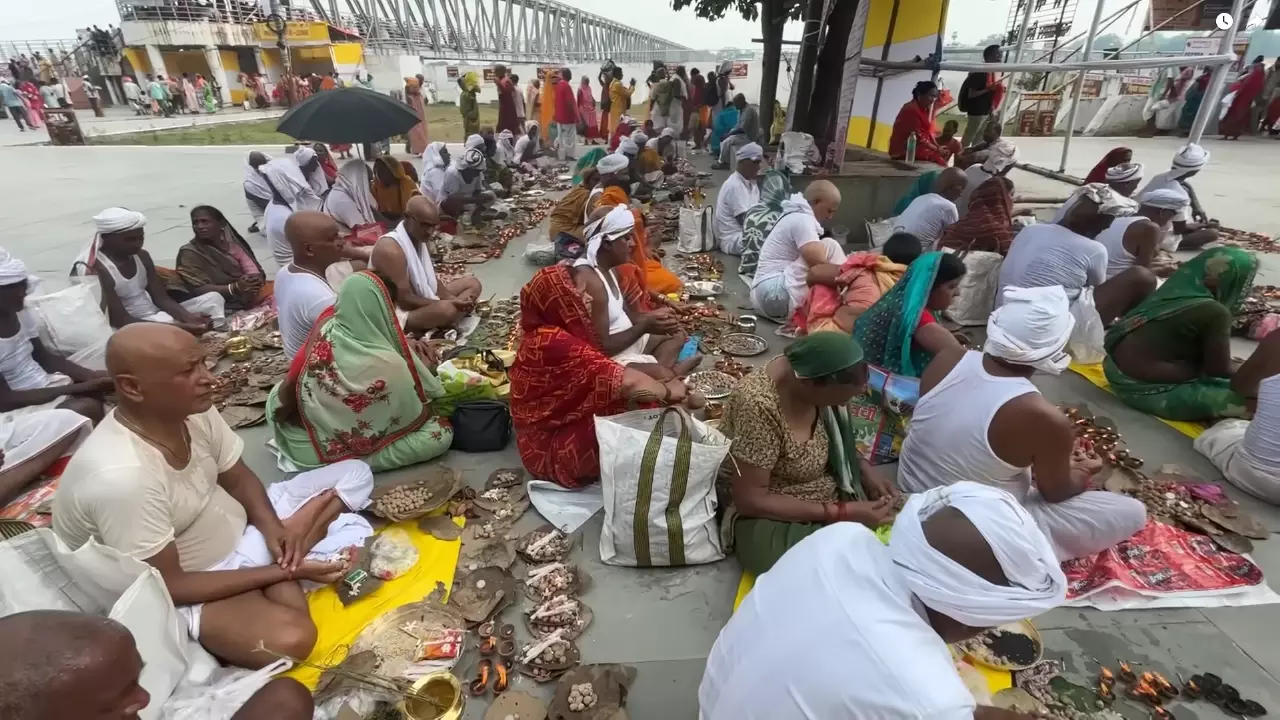
Tarpana (Water Libations to Quench the Soul’s Thirst)
Tarpana is the essential rite of offering libations of water to satisfy the spiritual thirst of the departed souls. In Gaya, this is performed in the holy Phalgu River. This river is unique; its waters flow beneath a vast expanse of sand, symbolising a hidden, spiritual current. It is revered as being saturated with the very essence of Lord Vishnu. The offering, typically made with water, black sesame seeds (gingelly or til), and sacred darbha grass, is given to:
-
The three immediate paternal ancestors (father, grandfather, great-grandfather).
-
The three immediate maternal ancestors.
-
All other departed relatives, including those who died prematurely or by accident.
-
It is also a compassionate custom to offer tarpana to any souls one may have known, to grant them peace and refreshment on their journey.
Piṇḍa Dāna (The Central Offering of the Symbolic Body)
This is the heart of the Shradh ceremony. Piṇḍas are consecrated balls, usually made from rice flour or barley flour, mixed with ghee, honey, and black sesame seeds. They serve a dual purpose: they are the symbolic body and the spiritual nourishment for the soul on its journey to the ancestral realm. The offering of Piṇḍas in Gaya is an act of such power that it ensures the ancestors ascend to a divine state. This central act of the Gaya pilgrimage from Malaysia must be performed at specific, highly sanctified locations:
-
On the Banks of the Phalgu River: This is where the ritual often begins, connecting the offerings to the sacred waters. It is here that Lord Rama himself is said to have offered pindas for his father, Dasharatha.
-
Within the Sacred Viṣṇupada Temple: This ancient and revered temple houses a divine footprint of Lord Vishnu embedded in a rock. The main Pinda Daan ceremony is performed within its sacred precincts, placing the offerings at the feet of the Lord Himself.
-
Under the Akṣayavat (The Immortal Banyan Tree): The final pindas are offered under this ancient, imperishable banyan tree. It is believed that any rite performed here becomes akshaya (eternal and undiminishing), bringing the pilgrimage to a successful and powerful conclusion.
-
Other Important Sites: Offerings may also be made at other potent sites like Gayāśiras (the “head” of Gayasura) and Pretaśila to ensure complete and absolute liberation from the state of ghosthood.
A Special Focus for South Indian and Tamil Families on their Gaya Pilgrimage from Malaysia
The sacred city of Gaya has for centuries been a melting pot of Hindu traditions. Its pilgrimage infrastructure is well-established to serve the specific needs and customs of devotees from different regions, which is a crucial point of comfort for families planning a Gaya pilgrimage from Malaysia with South Indian roots.
Specialized Priests and Linguistic Comfort
The spiritual ecosystem in Gaya is designed to accommodate linguistic and cultural diversity, ensuring that every devotee feels guided and understood.
-
The Gayawals and Dravida Brahmans: The Gayawals, the hereditary priests of Gaya, are the primary sacred specialists for these rites. Recognizing the vast number of pilgrims from the South, many Gayawal families have for generations specialized in serving them. They often speak Tamil and other southern languages fluently. Furthermore, they employ assisting Brahman ritualists (Acharyas) who come from Tamil Nadu and other southern regions to ensure every mantra and instruction is clearly communicated and followed according to the family’s tradition. This system ensures a seamless and authentic experience for those on a Gaya pilgrimage from Malaysia.
-
Established Rights and Traditions: Historically, the rights of South Indian priests (Panch Dravids) to serve their southern patrons (jajmans) in pilgrimage centers have been well-established. This creates an environment of trust and familiarity for visiting devotees.
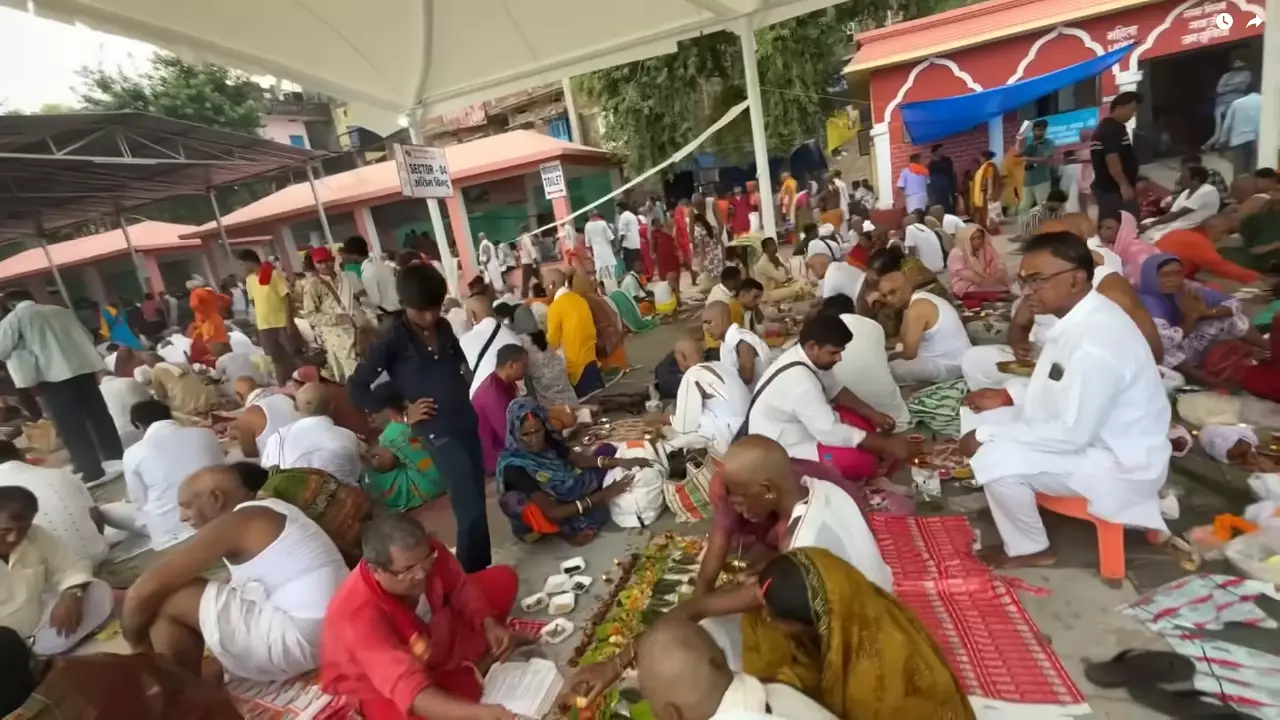
Accommodation of Regional Customs in Gaya
The priests in Gaya are highly experienced in accommodating the subtle but important ritual variations that South Indian and Tamil families may follow.
-
Specific Auspicious Timings: In addition to the universally auspicious period of Pitri Paksha, many Tamil pilgrims traditionally time their visit to coincide with the holy festival of Śivaratri to perform their ancestral duties.
-
Ritual Nuances: Practices such as the direction of circumambulation (pradakṣiṇā)—where South Indians often use the anti-clockwise direction (apsavya) for ancestral rites—are well-understood and correctly guided by the local priests. The specific types of dan (charitable gifts) and the articles used in the offerings are also adapted as per the family’s customs.
Planning Your Pilgrimage: Itinerary, Accommodation, and Food
A structured plan is essential for a peaceful and focused Gaya pilgrimage from Malaysia. It allows you to immerse yourself in the spiritual process without being burdened by logistical concerns.
A Recommended 2-Night / 3-Day Itinerary for Comfort and Devotion
While the core rituals can be completed in a single day, a more relaxed itinerary allows for travel recovery and a more profound spiritual experience.
-
Day 1: Arrival in Gaya and Acclimatization.
-
Arrive at Gaya Airport (GAY) via your connecting flight.
-
You will be met and transferred to your pre-booked hotel.
-
The rest of the day is for rest and mental preparation. You can visit the Mahabodhi Temple in nearby Bodhgaya in the evening for a serene experience.
-
-
Day 2: The Main Day of Shradh and Pinda Daan.
-
After an early morning bath, your priest and guide will accompany you. The day is dedicated to the rituals.
-
Morning: Proceed to the Phalgu River to perform Tarpana.
-
Mid-day: Visit the Vishnupad Temple to perform the main Pinda Daan ceremony. The priest will guide you through the offerings for your paternal and maternal ancestors at the various vedis (altars).
-
Afternoon: Conclude the rites at the Akshayavat. The entire process takes approximately 5-6 hours.
-
-
Day 3: Departure.
-
After a peaceful breakfast, you will be transferred to Gaya Airport (GAY) for your flight back home, having successfully completed your sacred duty. This structured itinerary is the ideal framework for a successful Gaya pilgrimage from Malaysia.
-
Accommodation Options in Gaya and Bodhgaya
Most pilgrims stay in Bodhgaya, which is about 15 km from Gaya town and offers a wider range of better-quality accommodation.
-
Budget (Dharamshalas and Guesthouses): For the frugal pilgrim, numerous dharamshalas and basic guesthouses are available.
-
Cost: ₹800 – ₹2,000 per night (Approx. RM 45 – RM 115).
-
-
Mid-Range Hotels (3-Star): These offer comfortable air-conditioned rooms with modern amenities, ideal for families.
-
Cost: ₹3,000 – ₹6,000 per night (Approx. RM 170 – RM 340).
-
-
Higher-End Hotels (4-Star and above): For those seeking more luxury and comfort, Bodhgaya has several premium hotels.
-
Cost: ₹7,000 – ₹15,000+ per night (Approx. RM 400 – RM 850+).
-
Food (Bhojan) for the Pilgrim
The food in Gaya and Bodhgaya is predominantly vegetarian to respect the sanctity of the holy place.
-
Local Eateries and Thalis: You can find simple, wholesome, and delicious vegetarian thalis (set meals) in local restaurants.
-
Cost: ₹150 – ₹300 per person per meal (Approx. RM 8 – RM 17).
-
-
Hotel Restaurants: Most mid-range and high-end hotels have multi-cuisine vegetarian restaurants offering a wider variety of dishes.
-
Cost: ₹500 – ₹1,200 per person per meal (Approx. RM 28 – RM 70).
-
-
Local Delicacies: While on your pilgrimage, do not miss the famous local sweets of Gaya, such as Tilkut (made from sesame seeds and jaggery) and Khaja.
Travel Logistics: A Complete Flight Guide for Your Gaya Pilgrimage from Malaysia
The most significant financial and logistical part of your planning is the travel from Kuala Lumpur to Gaya. There are no direct flights, so booking connecting flights is the only option.
Flight Options from Kuala Lumpur (KUL) to Gaya (GAY)
| Airline/Platform | Common Stopover Cities | Stops | Approx. Journey Time |
| IndiGo, AirAsia, Batik Air | Bengaluru (BLR), Kolkata (CCU) | 1–2 | 16–27 hours |
| Air India | Delhi (DEL), Kolkata (CCU) | 1–2 | 18–24 hours |
| Air India Express | Chennai (MAA), Kolkata (CCU) | 1–2 | 16–22 hours |
| Malaysia Airlines | Kolkata (CCU) | 1–2 | 20–26 hours |
| Thai Airways | Bangkok (BKK), Indian Hubs | 2 | 18–24 hours |
Important Travel and Booking Advice for a Smooth Journey
-
Primary Hubs: The most practical way to reach Gaya is to fly from Kuala Lumpur to a major Indian city like Kolkata (CCU), which is the nearest international airport, followed by Delhi (DEL) or Bengaluru (BLR), and then take a connecting domestic flight to Gaya (GAY).
-
Booking Platforms: It is highly recommended to use multi-airline comparison platforms like Skyscanner, MakeMyTrip, or Trip.com. These sites help you find the best combination of flights, layover times, and prices for your Gaya pilgrimage from Malaysia.
-
Journey Duration: The total travel time for your pilgrimage will be long, ranging from a minimum of 16 hours to over 30 hours. It is imperative to plan for a full day of rest upon arrival before beginning the sacred rites. This is a crucial aspect of planning a successful Gaya pilgrimage from Malaysia.
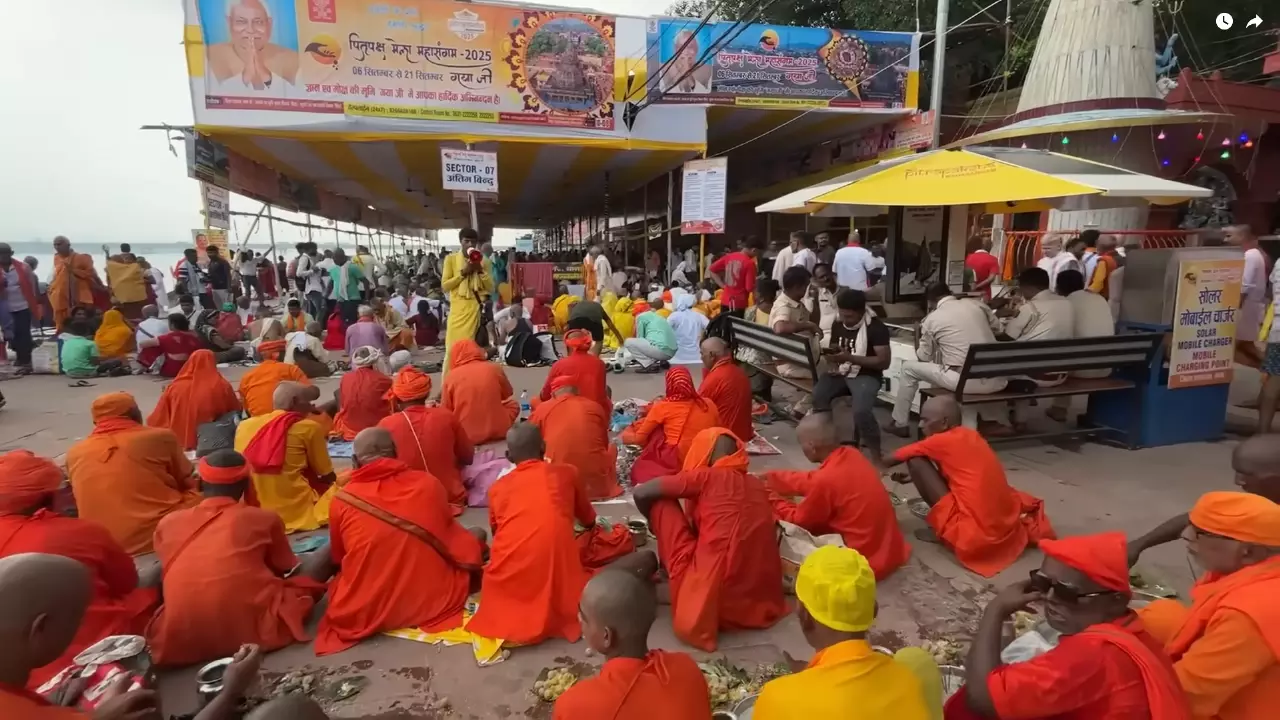
Conclusion: Fulfilling the Ultimate Filial Duty with a Well-Planned Pilgrimage
The journey for a Gaya pilgrimage from Malaysia is one of the most meritorious and spiritually rewarding acts a devotee can undertake. It is an act of profound love that bridges worlds, bringing eternal peace to the ancestors and securing divine blessings for the living family. With a deep understanding of the sacred rituals, the guidance of knowledgeable priests who respect your family’s traditions, and meticulous planning of your travel and stay, this holy journey will be a deeply transformative experience. May the blessings of Lord Gadadhara and your satisfied ancestors bring eternal harmony and prosperity to you and your family for generations to come.
